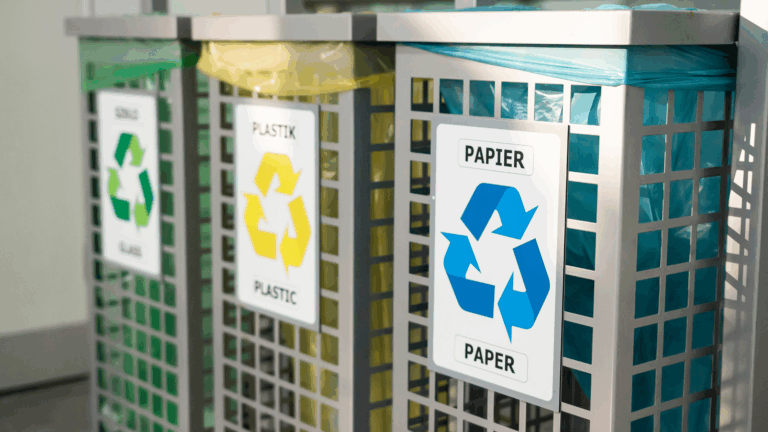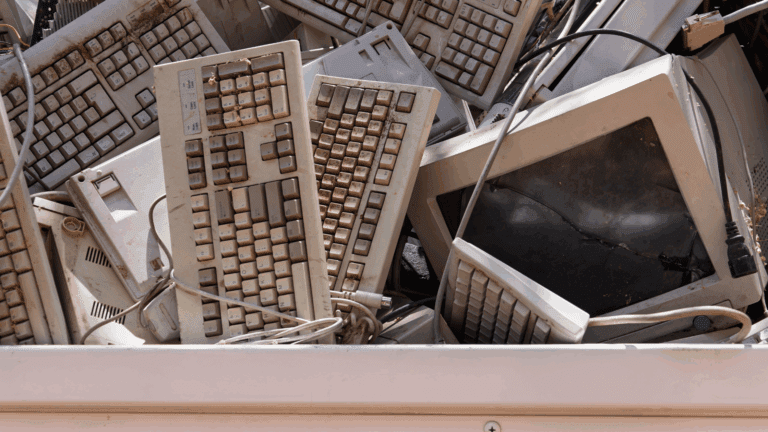
Paperless offices have become pretty standardised for many modern businesses, especially with the rise in remote working.
Businesses have seen benefits such as reduced waste, lower costs, and improved efficiency, as well as the obvious benefits to the planet.
But how much of an environmental impact does ditching paper actually have? And what are the trade-offs for going paperless? Let’s explore:
The environmental benefits of going paperless
- Reduced deforestation:
Producing paper is a major driver of deforestation, causing disruptions to ecosystems and contributing to habitat loss. By eliminating or drastically reducing paper use, businesses have helped preserve forests. - Lowered water and energy use:
A lot of water and energy goes into paper production, and so a paperless office significantly cuts these demands and shrinks the environmental footprint. - Decreased waste and pollution:
Paper accounts for a staggering 26% of total waste in landfills. Decreasing reliance on paper prevents the need to send so much waste to landfill and reduces the harmful emissions produced during decomposition.

The benefits to businesses of going paperless
- Easier to access files:
A paperless office means files are stored digitally instead of on paper, which eliminates the need to riffle through endless papers, improving employee productivity. - Saving space:
Without mounds of paper records, significant office space is freed up, as the need for bulky storage units is eliminated. - Reducing operational costs:
No paper means no need to purchase materials, such as paper and ink. - Enhancing data security:
Digital systems can come with robust encryption, access controls, and backup solutions to protect sensitive information. Whereas paper files can be easily accessed and may not be able to comply with modern, strict data protection demands.
The hidden environmental costs
- Increase in digital resources:
Digital devices, servers, and cloud storage require energy to manufacture and operate. While technology can reduce paper use, the carbon emissions from data centres and e-waste must be considered. - Short device lifespan:
Electronic waste tends to be hard to recycle, and the need for frequent replacement of digital devices contributes to additional waste.
Finding the balance
In this ever-evolving world of technology, it’s safe to say digital devices are here to stay, but there are still changes businesses can make to offset some of their carbon footprint. Coupled with a paperless office, businesses can maximise their sustainability efforts and contribute to a greener planet. Businesses should focus on:
- Energy efficiency: Try and prioritise renewable energy where possible.
- Device longevity: Choose durable, repairable technology to reduce e-waste.
- Hold the printing: Make efforts to reduce printing. When printing is unavoidable, use recycled paper and eco-friendly ink.
Is it worth it?
In short, absolutely, yes! A well-implemented paperless office is better for the environment overall than an office that produces excessive paper waste. However, it’s not a magic fix. It should be part of a business’s broader commitment to sustainable operations and should be implemented alongside other green practices, such as reducing energy consumption and managing e-waste.
Digital devices are here to stay and demand isn’t slowing down anytime soon. Therefore, making changes in other areas that won’t have detrimental impacts on your business operation, such as going paperless, are a must.

Contact Everflow today!
At Everflow, our goal is to make your utilities simpler. We ensure you get great-value contracts that are tailored to your needs and easy to manage.


